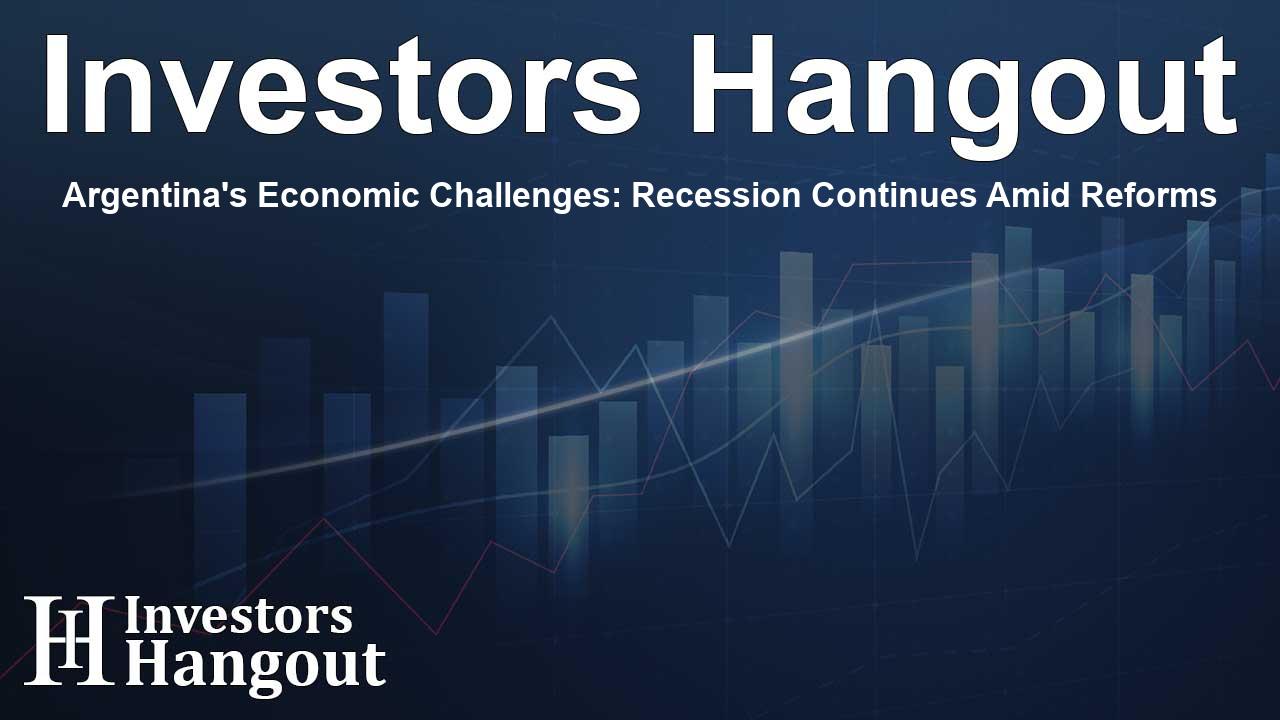Argentina's Economic Challenges: Recession Continues Amid Reforms

Argentina's Economic Landscape: A Deepening Recession
Argentina is grappling with a challenging economic situation, with forecasts indicating a 1.4% decline in GDP during the second quarter compared to a year earlier. This data emerges from a Reuters poll, marking the fifth consecutive quarter of contraction as the country faces stringent austerity measures implemented by President Javier Milei.
The Impact of Austerity Measures
The challenging approach to fiscal policy under Milei has had significant repercussions for the economy, affecting both employment and overall economic activity. Poverty rates have surged alongside rising unemployment, as the administration seeks to control inflation, which has reached staggering levels. According to government statements, these measures are deemed essential to stabilize the damaged economy, rebuild financial reserves, and address long-standing fiscal deficits.
Recession Defined
Argentina entered a technical recession earlier this year, characterized by two consecutive quarters of GDP contraction. The first quarter of the year already witnessed a 5.1% drop in economic output, highlighting the struggle the nation faces as it battles ongoing economic challenges.
Mixed Signals in Economic Recovery
Despite the grim outlook, analyst Marcelo Rojas suggests that there may be indications that the recession could soon come to an end. According to him, there are signs that the country's economic downturn might have reached its lowest point. He emphasized that while the potential for GDP growth exists, attracting new investment is crucial to generating momentum for recovery.
Sector-Specific Recovery
Argentina's economic recovery is not uniform across sectors. The agricultural sector, alongside the oil and gas industries, particularly in the Vaca Muerta shale region, is showing rapid growth. Conversely, sectors such as construction, financial services, and trade are facing significant reductions in activity.
Pablo Besmedrisnik, an economist with consultancy firm VDC, has observed recovery patterns where agriculture, energy, and mining exhibit notable improvement. This stark contrast with weaker sectors underscores the uneven nature of the recovery process.
Purchasing Power and Inflation Trends
As of the second quarter, wages have shown signs of gaining ground against inflation. Recent statistics reveal that monthly inflation rates have decreased dramatically from 25% in December to about 4% recently. However, annualized inflation continues to hover above 250%, making it the highest in the world.
The government anticipates that these measures will significantly reduce inflation rates by the end of the year, which may further enhance the purchasing power of Argentines. Improved purchasing power could stimulate consumption levels during the latter half of the year, allowing the economy to regain some strength.
Future Projections
Analyst forecasts for the year-on-year GDP contraction in the second quarter have varied widely, with estimates ranging from a decline of 1.4% to as much as 3.7%. The average projection suggests a 1.8% decrease, illustrating the uncertainty surrounding Argentina’s economic performance.
In light of these challenges, Milei's government has recently unveiled its 2025 budget, which outlines an ambitious target of 5% GDP growth for the upcoming year. This goal signifies a determined effort to commence a recovery trajectory amidst prevailing challenges.
Frequently Asked Questions
What is the current state of Argentina's economy?
Argentina is currently experiencing a recession, with forecasts indicating a GDP decline of 1.4% in the second quarter. This marks the fifth consecutive quarter of economic contraction.
What measures is President Javier Milei implementing?
President Milei is enforcing strict austerity measures aimed at controlling inflation, rebuilding reserves, and addressing fiscal deficits, which have led to increased poverty and unemployment.
Which sectors are showing signs of recovery?
The agricultural, energy, and mining sectors are recovering well, while construction and trade continue to struggle significantly.
What are the inflation trends in Argentina?
Monthly inflation has decreased from 25% to around 4%. Annualized inflation remains over 250%, but the government aims to lower this rate markedly by year-end.
What is the GDP growth target for next year?
The government has set a target for 5% GDP growth for the following year, as outlined in the newly presented 2025 budget.
About Investors Hangout
Investors Hangout is a leading online stock forum for financial discussion and learning, offering a wide range of free tools and resources. It draws in traders of all levels, who exchange market knowledge, investigate trading tactics, and keep an eye on industry developments in real time. Featuring financial articles, stock message boards, quotes, charts, company profiles, and live news updates. Through cooperative learning and a wealth of informational resources, it helps users from novices creating their first portfolios to experts honing their techniques. Join Investors Hangout today: https://investorshangout.com/
Disclaimer: The content of this article is solely for general informational purposes only; it does not represent legal, financial, or investment advice. Investors Hangout does not offer financial advice; the author is not a licensed financial advisor. Consult a qualified advisor before making any financial or investment decisions based on this article. The author's interpretation of publicly available data shapes the opinions presented here; as a result, they should not be taken as advice to purchase, sell, or hold any securities mentioned or any other investments. The author does not guarantee the accuracy, completeness, or timeliness of any material, providing it "as is." Information and market conditions may change; past performance is not indicative of future outcomes. If any of the material offered here is inaccurate, please contact us for corrections.